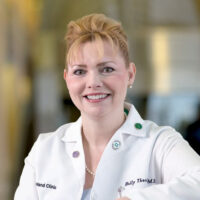More Than a Feeling. Female Orgasm.

By: Holly L. Thacker, MD • Posted on March 17, 2014
Female Sexual Dysfunction in Women
Listening to some of my favorite music from Boston “More Than a Feeling," “Rock N Roll Band", “Peace of Mind" and “Foreplay Long Time" remind me not only of the late 1970s but of female orgasm, the pervasiveness of female sexual dysfunction and the lack of well-defined therapies. Female Sexual Dysfunction(FSD) is common, underappreciated and complex - just like women!
Benefits of Sexual Activity
Sexual function and satisfaction is very important and not just for reproduction. Sexual activity is associated with the following:
- Intimacy
- Stress reduction
- Lowers blood pressure
- Associated with boosted immunity
- Burns calories
- Increases endorphins (which can lower pain)
- Improve sleep
- Counts as exercise
5 Categories of Female Sexual Dysfunction
FSD can be broken down into five categories:
- Hypoactive Sexual Desire Disorder (HSDD) - also commonly referred to as “low libido"
- Sexual Pain Disorders - including Dyspareunia (painful sexual activity usually from menopausal vulvo-vaginal atrophy from lack of hormones) as well as vulvodynia (a burning pain syndrome of the genitals)
- Sexual Arousal Disorder - can be genital as in erectile dysfunction in males or at the brain level-more common in females
- Sexual Aversion - can be related to a history of sexual abuse
- Orgasmic Disorder - up to 10-20% of women have not achieved orgasm and many others have difficulty and this can be treated.
Hypoactive Sexual Desire Disorder (HSDD)
As far as HSDD, it is common and sometimes over identified. The purpose of the sex drive is to reproduce. In mid-life and beyond, it is not uncommon or abnormal to notice a diminished or even absent sex drive in women who have reproduced or not. However, if one is not distressed by this or if she enjoys intimacy, but just does not actively pursue it, it is not a problem per se. Most of us are driven to eat because of hunger, or driven to sleep because of fatigue as sleep and food are essential to one's survival. Sex is critical for the species survival not an individual's survival. Just like how many people are not driven to exercise, but once they do, they enjoy it - the same is true for sex for many women.
On the other hand, true HSDD can be related to castration (removal of the ovaries) and the lack of the sex hormones estrogen and testosterone that can also occur with naturalmenopause or other conditions. Unfortunately, there is NO FDA approved way of giving testosterone (T), the “hormone of desire" to women like there is for men. On a milligram per milligram basis, women have more testosterone than estrogen. Both the adrenal glands and the ovaries make testosterone. With age, oophorectomy and other medical conditions, testosterone levels can plummet in women. The following can all drop with low testosterone:
- Sex drive
- Muscle strength
- Energy levels
Off-label testosterone can be used, but has to be used very carefully by a hormone expert. Too much testosterone can lead to the symptoms below:
- Acne
- Hair loss
- Facial hair growth
- Aggressiveness
- Permanent voice changes
Currently, compounding pharmacies are the mainstay for testosterone or using 1/10 of a commercially available male preparation.
Female Sexual Dysfunction Treatments and Studies
- FDA Studies - Dr. Sheryl Kingsberg, noted sex researcher at Case Western Reserve, is recruiting women for an intranasal gel testosterone study for women with an acquired female orgasmic disorder. Bremelanotide (an on-demand injectable melanortin agonist) is being studied for both HSDD and arousal disorder. Femprox, a topical cream, is also being studied for the treatment of arousal disorder.
- Zestra -Currently, over-the-counter Zestra (a botanical oil to apply to the genitals) is available to enhance a woman's ability to climax.
- EROS device - The FDA-approved agent, the EROS device, is available by prescription to help women with climax and can be prescribed by a physician, although hasn't been that popular.
- INTONE ™ & Intensity™ - There is a new FDA approved electrical stimulating device called INTONE ™ devised to help treat urinary leakage in women that may also help with orgasmic capacity. In fact, a smaller device, called Intensity™ can be used solely to improve and stimulate female orgasms and does not require physician prescription.
- Off-Label use of Vaginal DHEA 1% Suppository - Is an adrenal precursor and has been used in women with vaginal atrophy/thinning/decreased sensation in women who cannot or will not use vaginal estrogen.
- Vaginal estrogen - Is FDA-approved and available as a cream, a tablet or a vaginal ring, and thought to be the best treatment for genital arousal problems and pain from vulvovaginal atrophy (VVA) that occurs in many postmenopausal women.
- Osphena - The first, non-estrogen oral therapy for moderate to severe dyspareunia (painful sexual activity) due to VVA has been FDA-approved, Osphena - 60mg daily with food. This has been a major breakthrough for women who cannot or will not take estrogen or who do not want to use local vaginal therapies for painful vaginal atrophy.
- Flibanserin - Flibanserin was FDA approved to treat premenopausal women with hypoactive sexual desire disorder (HSDD) and is taken 100mg daily at night with no alcohol and this helps restore a woman’s sex drive back to her baseline. There are no medical aphrodisiacs and this is not “a female version of Viagra.”
The Female Orgasm
Orgasmic dysfunction can be primary, meaning a woman has never climaxed in her adult life or secondary meaning she had been able to, but now finds it difficult or impossible. Only 10 percent of women easily climax, the majority of women are in the remaining 80%. I see many women who are relieved to know they are “normal." Many women think they are not normal if they cannot climax with just vaginal intercourse, which most women cannot!
It is important for a woman to know what her erogenous zones are and communicate that to her partner. A woman's erogenous zones include:
- Clitoris
- “G-spot," the anterior part of the lower vagina
- Breasts
- “ClitGVa" = the clitoris, G-spot and the vagina
For women who have secondary, acquired orgasmic dysfunction, meaning they have been able to climax without difficulty in the past, but now have trouble “coming," a history, physical, and hormonal and medication evaluation are needed. The following could be the culprit:.jpg)
- Medicines such as SSRI
- Hormonal deficiency
- Partner issues
- Medical problems such as diabetes and hypertension
- Lack of exercise
- Smoking
- Drinking
- Sleep disorders
Treatment for Orgasmic Dysfunction
Off-label use of oral prescription bupropion is sometimes prescribed or even Viagra, which is off-label in women who are on SSRI anti-depressants. Some physicians will also prescribe off-label “Scream Cream" by Ionia pharmacy, a concoction of various topical medications applied to the clitoris to increase blood flow. This can be used alone or in conjunction with the Intensity™ device. In the Center for Specialized Women's Health we have the Intensity™ device available.
FSD is real, causes distress and disruption and can be treated, although we sure need more studies.
“It's just outside your front door"…"It's been such a long time"…."Deep in my mind, I can't forget about you"..."taking my time" … “getting crazy, anticipation, love and music." –Boston.
Be Strong, Be Healthy, Be in Charge.
-Holly L. Thacker, M.D.
Holly L. Thacker, MD, FACP is nationally known for her leadership in women’s health. She is the founder of the Cleveland Clinic Women’s Health Fellowship and is currently the Professor and Director of the Center for Specialized Women’s Health at Cleveland Clinic and Lerner College of Medicine at Case Western Reserve University. Her special interests are menopause and related medical problems including osteoporosis, hormone therapy, breast cancer risk assessment, menstrual disorders, female sexual dysfunction and interdisciplinary women’s health. Dr. Thacker is the Executive Director of Speaking of Women’s Health and the author of The Cleveland Clinic Guide to Menopause.
Related Articles
- Therapy For Vaginal Dryness And Atrophy!
- Are You Ever Too Old To Be Thinking About Sex?
- Burning Women’s Health Questions: What Can Help My Hot Flashes and Vaginal Dryness?
- Low Libido – Is Menopause the Cause?
- Surviving Menopause Series: Sex and Sexual Dysfunction
- The Importance of Sexual Health
- Women Deserve to Have Low Libido Treated!
